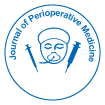
Journal of Perioperative Medicine
Open Access
ISSN: 2684-1290

ISSN: 2684-1290
Opinion Article - (2025)Volume 8, Issue 1
The traditional practice of preoperative fasting has been a cornerstone of aesthetic safety for decades, aimed primarily at reducing the risk of pulmonary aspiration during induction. However, in recent years, this practice has come under scrutiny for its unintended metabolic consequences, particularly regarding postoperative insulin resistance. In high-income healthcare systems where surgical outcomes are closely tied to enhanced recovery protocols, preoperative carbohydrate loading has emerged as a valuable intervention aimed at reducing the catabolic response to surgery and improving perioperative glucose control.
Surgical stress induces a well-documented neuroendocrine response characterized by increased levels of cortisol, catecholamine’s and proinflammatory cytokines. This stress response promotes hepatic gluconeogenesis and peripheral insulin resistance, leading to hyperglycaemia even in nondiabetic patients. While this reaction is part of the body’s defence mechanism to support wound healing and immune function, excessive or prolonged insulin resistance is associated with poor outcomes, including increased infection rates, delayed wound healing and longer hospital stays.
Prolonged preoperative fasting exacerbates this catabolic state. By depriving the body of energy substrates for an extended period, traditional nil per os (NPO) regimens increase endogenous glucose production and worsen postoperative insulin resistance. In contrast, the practice of administering a carbohydrate-rich drink 2 to 3 hours prior to surgery has shown promising results in minimizing this metabolic disruption. Carbohydrate loading typically involves the ingestion of a clear beverage containing complex carbohydrates such as malt dextrin. Unlike simple sugars, complex carbohydrates provide sustained energy release without causing rapid glycaemic spikes. Administered as part of Enhanced Recovery After Surgery (ERAS) protocols, these drinks are safe, well-tolerated and do not increase the risk of aspiration when given within the recommended time frame prior to induction.
Numerous clinical trials and meta-analyses have demonstrated the benefits of preoperative carbohydrate loading in reducing insulin resistance and improving postoperative glycaemic control. Studies conducted in the UK, Scandinavia and Canada have shown that patients who receive carbohydrate loading experience less postoperative insulin resistance compared to those undergoing traditional fasting. This is particularly significant for patients with type 2 diabetes or metabolic syndrome, where perioperative hyperglycaemia is linked with increased morbidity.
Mechanistically, carbohydrate loading works by stimulating endogenous insulin secretion and reducing the need for hepatic gluconeogenesis. This helps maintain euglycemia and suppresses the metabolic stress response to surgery. Furthermore, patients who receive preoperative carbohydrates report better well-being, reduced hunger and thirst and improved satisfaction all of which are relevant in high volume surgical centres where patient experience is increasingly viewed as a quality metric.
Beyond its metabolic benefits, carbohydrate loading has also been linked with improved functional outcomes. Patients demonstrate faster return of bowel function, lower incidence of postoperative nausea and vomiting and shorter hospital stays. These findings align with broader ERAS goals of minimizing surgical stress, reducing opioid use and accelerating recovery.
Despite the accumulating evidence, the adoption of preoperative carbohydrate loading remains inconsistent across institutions. Barriers include provider scepticism, lack of standardization in practice and concerns about aspiration risk. However, data from high income countries with well-established perioperative pathways indicate that when implemented properly, carbohydrate loading is not only safe but highly beneficial. The risk of aspiration has not been shown to increase when clear carbohydrate drinks are consumed up to 2 hours before anaesthesia induction.
Education and interdisciplinary collaboration are critical to overcoming implementation barriers. Anaesthesiologists, surgeons and nursing staff must be aligned on protocol timing, patient eligibility (e.g., excluding those with delayed gastric emptying) and drink composition. Clear communication with patients about the purpose and timing of carbohydrate loading is also essential to ensure adherence.
In the current climate of personalized medicine and patient centred care, it is no longer sufficient to rely on outdated fasting guidelines that may do more harm than good. Instead, perioperative nutrition should be seen as a modifiable risk factor one that can be optimized to improve both short and long term outcomes.
Preoperative carbohydrate loading represents a simple, evidence based intervention that can significantly reduce postoperative insulin resistance and improve surgical recovery. By shifting away from the traditional fasting model and embracing a more physiological approach to preoperative care, high income healthcare systems have the opportunity to enhance metabolic stability, reduce complications and promote faster recovery for surgical patients. As part of comprehensive ERAS protocols, carbohydrate loading should be standardized and widely adopted, supported by continued research and education. In doing so, perioperative care can become more proactive, personalized and aligned with the modern principles of enhanced recovery and patient safety. The future of surgical optimization lies not only in technical advances but in smarter, science-backed approaches to preoperative preparation starting with the simple act of fuelling the body before surgery.
Citation: Caldwell ER (2025). Preoperative Carbohydrate Loading and Its Effect on Insulin Resistance. J Perioper Med. 8:269.
Received: 05-Feb-2025, Manuscript No. JPME-25-37979; Editor assigned: 07-Feb-2025, Pre QC No. JPME-25-37979 (PQ); Reviewed: 22-Feb-2025, QC No. JPME-25-37979; Revised: 02-Mar-2025, Manuscript No. JPME-25-37979 (R); Published: 09-Mar-2025 , DOI: 10.35248/2684-1290.25.8.269
Copyright: © 2025 Caldwell ER. This is an open-access article distributed under the terms of the Creative Commons Attribution License, which permits unrestricted use, distribution, and reproduction in any medium, provided the original author and source are credited.